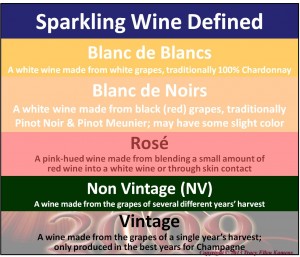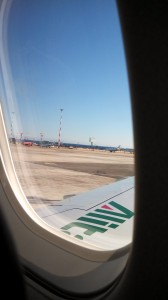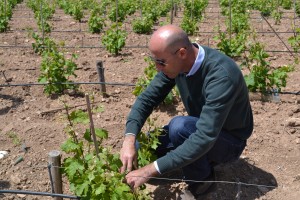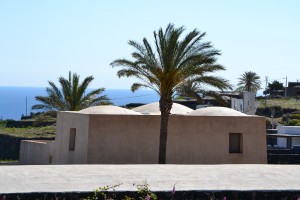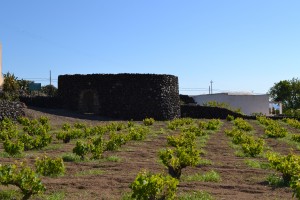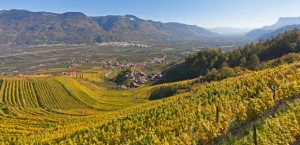
Image courtesy of the CIVP
With indictments accusing Puxatawny Phil of fraud being filed across the country, it’s clear that everyone is ready for spring. Whether it’s cabin fever, a thorough dislike of cold weather and snow or simply a desire to wear short-sleeves and sandals, the lure of warmer weather tantalizes us all. And, small, but simple, signs – sightings of ramps and fiddlehead ferns at the market, robins heard overhead or crocuses blooming on the lawn – provide a glimmer of hope that perhaps spring has finally arrived.
Although Alfred Lord Tennyson noted that “In the spring, a young man’s fancy lightly turns to thoughts of love,” a wine lover’s fancy might turn to thoughts of lighter wines, with the many shades of rosé serving as a further reminder of the change of seasons, a pink lining to the dark cloud that has been winter. Thus, we happily turn our attention to the rosés of Provence this month.
We hope that you will feel lighter in your heart with a spring in your step as we usher in this time of renewal and collectively “think pink.”
Drink wisely and well,
Tracy Ellen Kamens, Ed.D., DWS, CWE
CEO: Chief Education Officer
and
Jared Michael Skolnick
COO: Cork Opening Officer
‘Tis the Season to Think Pink
Admittedly, rose-hued wines can be enjoyed all year round, but the palest blush of these pink wines heralded the near arrival of spring in New York as producers from Provence strutted their wines for press and trade in early March. Moreover, the message was made clear – thinking pink is no longer a fad. With nine years of growth in the U.S. market, rosé is one of the U.S.’s fastest growing wine categories in retail sales. While rosé wines hail from all over the wine world, France is the number one producer of rosé wine worldwide and Provence accounts for forty percent of all the French quality-level rosé wine production. In fact, the majority of Provence’s production (nearly 88 percent) is allocated to making rosé wines.
Blessed with near perfect, Mediterranean climate conditions, Provence prides itself on being the birthplace of all French wine. In fact, winemaking in the region dates to 600 BCE, representing a total of twenty-six centuries of wine production in France. Although the regional area is the IGP de Méditerranée, most Provencal wine is produced at the AOC-level with lovely dry rosés made principally from Mourvèdre, Grenache and Cinsaut. Tibouren, Carignan and Cabernet Sauvignon also complement these blends.
The 65,000 acres dedicated to rosé production are centered in three appellations: Côtes de Provence, which has three sub-appellations, and is the largest at 73 percent of overall production; Coteaux d’Aix-en-Provence, which comprises an additional 17 percent of production; and Coteaux Varois en Provence, which accounts for the remaining 10 percent.
Almost all of these wines are produced using temperature-controlled, stainless steel fermentation with an emphasis on maintaining vibrant acidity and fresh fruit aromas and flavors. These dry style rosés are exceptionally food-friendly, pairing well with a broad range of cuisines as well as being easily enjoyed on its own.
Les Vins Bréban L’Opale de la Presqu’ile de Saint Tropez 2012, Côtes de Provence, France, $14.00 This wine brings together 50% Grenache, 30% Carignan and 20% Cinsault. It was meatier and fleshier than some of the other wines I sampled that day with berry and peach notes. Nicely structured with slight grip and a hint of citrus pith, the wine has long length.
Mas de Cadenet Arbaude Rose 2012, Côtes de Provence, France, $15.00 Established by the Négrel family, Mas de Cadenet celebrates its 200th anniversary this year, with the 7th generation now at the helm. The family’s estate, named for a shrub in the juniper family, is situated near Aix-en-Provence. The Arbaude cuvée is a blend of 70% Syrah, 15% Carignan and 15% Cabernet Sauvignon and displays fleshy, melon aromas and flavors with vibrant acidity, slight citrus pith and minerality on the elegant palate.
Maison Saint Aix AIX 2012, Coteaux d’Aix-en-Provence, France, $20.00 With its very attractive, graphic label, this wine caught my eye across the room. After tasting it, it won over my palate as well. A blend of Grenache, Cinsault, Syrah and Counoise, this wine offers up fresh, ripe berry fruit character on both the nose and palate. A slight minerality is evident on the palate, culminating in long length.
Château Coussin 2012, Côtes de Provence Sainte-Victoire, France, $25.00 Produced by the Sumerire family, which traces its heritage in the area back to the 13th century, this wine is a blend of Grenache (70%), Cinsault (20%) and Syrah (10%). It has a beautifully floral nose with delicate fruit on the palate, which is joined by a hint of minerality in the finish. I also had the opportunity to taste the 2011 vintage of this wine, which showed some complexity in its year of development with darker fruit character than the 2012.
Château d’Esclans 2012, Côtes de Provence, France, $35.00 Well-known for its Whispering Angel rosé, Caves d’Esclans produces several other rosé wines including this one, which is a blend of Grenache, Rolle, Syrah, Tibouren and Cinsault. With some of the wine spending time in neutral oak barrels and undergoing bâtonnage (lees stirring), this wine takes on some complexity and structure, but still displays hallmark floral, melon and berry aromas.

